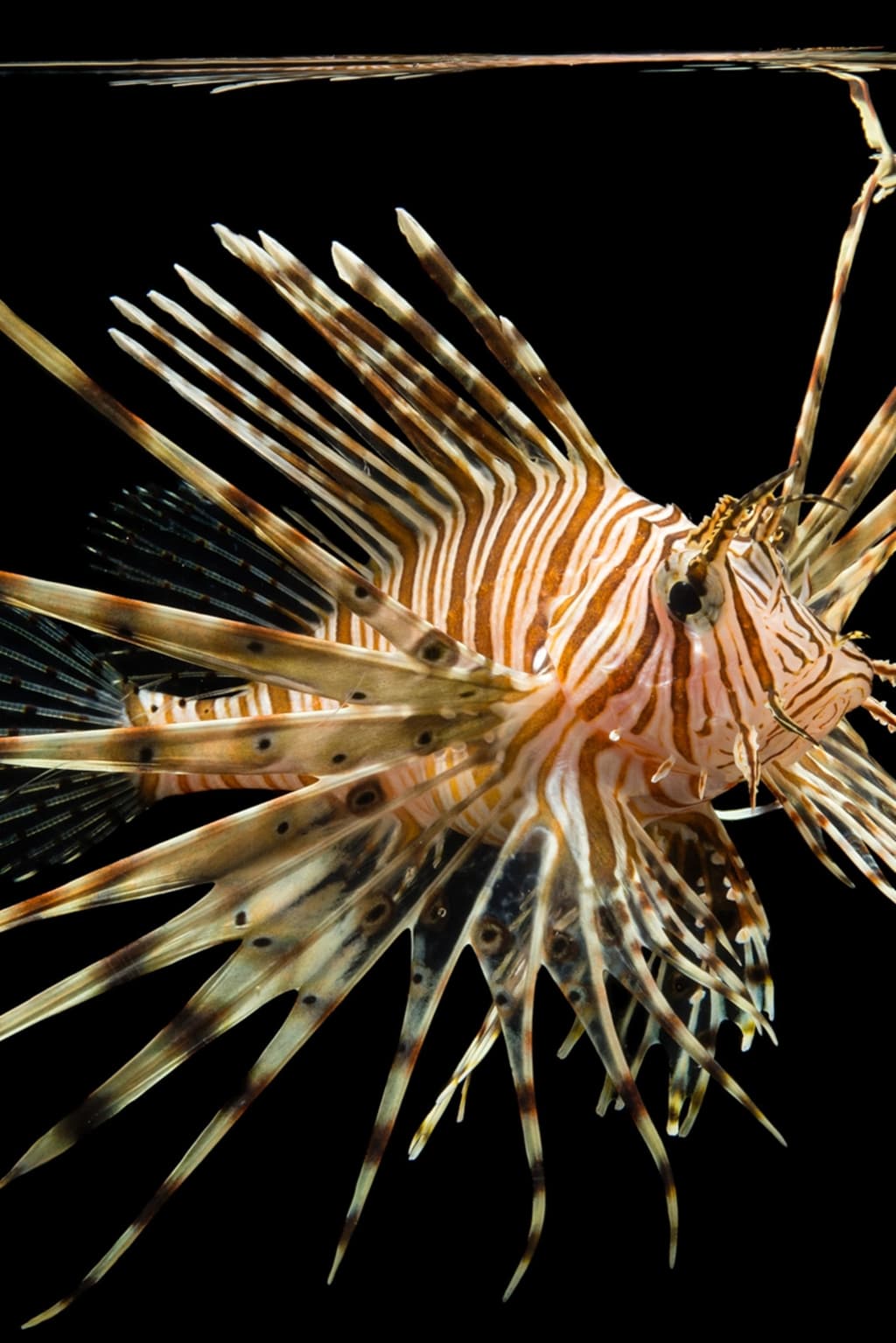
Fish Overview.
Fish are aquatic animals that breathe through gills and are characterized by a streamlined body and fins that allow them to swim efficiently through water. They come in a wide variety of shapes, sizes, and colors, and can be found in nearly every body of water on Earth, from rivers and lakes to oceans and coral reefs.
Fish are an important part of the food chain, providing a source of protein for humans and other animals. They are also often kept as pets in aquariums, and many species are popular for sport fishing.
Some well-known examples of fish include salmon, tuna, cod, and trout. However, there are thousands of different species of fish, each with their own unique characteristics and adaptations for surviving in their particular aquatic environment.
Types of Fish.
There are countless species of fish in the world, but here are some examples of different types of fish:
Salmon
Trout
Tuna
Cod
Bass
Catfish
Tilapia
Swordfish
Carp
Mahi-mahi
Haddock
Sardines
Anchovy
Mackerel
Grouper
Perch
Snapper
Pike
Rainbow Fish
Barracuda.
This is just a small sample of the many types of fish that exist in the world.There are over 30,000 known species of fish, making them the most diverse group of vertebrates on the planet. Fishes can be classified into several different groups based on their anatomy, behavior, habitat, and other characteristics. Here are some of the main types of fishes:
Jawless fishes: These include lampreys and hagfishes, which lack a true jaw.
Cartilaginous fishes: These include sharks, rays, and chimeras, which have a skeleton made of cartilage instead of bone.
Bony fishes: These include the vast majority of fish species, such as salmon, trout, bass, and tuna, and have a bony skeleton.
Ray-finned fishes: This group includes most bony fish species and is characterized by their fins, which are supported by bony spines.
Lobe-finned fishes: This group includes a small number of bony fish species with fleshy fins that are similar in structure to the limbs of land animals.
Flatfishes: These include species like flounder, halibut, and sole, which have a flattened body shape and swim sideways.
Eels: These elongated fish have a snake-like body shape and lack pelvic fins.
Catfishes: This group includes many freshwater species with a distinctive barbels, which are fleshy whisker-like appendages around their mouth.
There are many other types of fishes, each with unique characteristics and adaptations that help them survive in their respective environments.
World costly fish
Here are some of the world's most costly fishes:
Bluefin Tuna - The most expensive fish in the world, the Bluefin Tuna can fetch prices in the millions of dollars, especially when sold at auction in Japan.
Platinum Arowana - This rare freshwater fish from Southeast Asia is known for its stunning metallic sheen and can fetch up to $400,000.
Freshwater Polka Dot Stingray - This rare and exotic stingray is found in the rivers of Thailand and can fetch up to $100,000.
Peppermint Angelfish - This colorful and elusive saltwater fish is found in the waters off of Christmas Island and can sell for up to $30,000.
Golden Basslet - This vibrant yellow and blue saltwater fish is found in the waters around Brazil and can fetch up to $10,000.
Masked Angelfish - This striking black and white saltwater fish is found in the waters off of Japan and can sell for up to $8,000.
It's important to note that the prices for these fish can vary widely depending on factors such as availability, location, and demand.
Advantages of Fish
Fish offer numerous advantages as a food source and are an important part of a healthy diet. Here are some of the advantages of fish:
Rich in nutrients: Fish are a great source of protein, omega-3 fatty acids, vitamins, and minerals like vitamin D, B vitamins, potassium, selenium, and iodine.
Low in saturated fat: Most fish are low in saturated fat and high in unsaturated fat, which is good for heart health.
May reduce the risk of heart disease: Eating fish regularly, especially fatty fish like salmon, can help lower the risk of heart disease due to their high levels of omega-3 fatty acids.
May improve brain function: Omega-3 fatty acids in fish have been linked to improved brain function and reduced risk of cognitive decline.
May reduce inflammation: Some studies suggest that consuming fish or omega-3 supplements can help reduce inflammation in the body, which is linked to many chronic diseases.
Versatile and delicious: Fish can be cooked in many different ways and can be used in a variety of dishes, making it a versatile and tasty addition to any diet.
Overall, fish are an excellent food choice that can provide numerous health benefits, and incorporating them into your diet can be a great way to improve your overall health and well-being.
Fish: Pros and Cons
While fish can be a healthy and nutritious food source, there are also some potential disadvantages associated with consuming fish:
High levels of mercury: Some species of fish can accumulate high levels of mercury, a toxic heavy metal, in their flesh. Consuming too much mercury can be harmful to human health, especially for pregnant women and children.
Risk of foodborne illness: Eating raw or undercooked fish can increase the risk of foodborne illness caused by bacteria and parasites, such as salmonella, norovirus, and Vibrio vulnificus.
Overfishing and environmental concerns: Overfishing can lead to the depletion of fish populations and disrupt entire marine ecosystems. Fish farming can also have negative environmental impacts, such as pollution and the spread of disease.
Cost: Some species of fish can be expensive, making them less accessible to people with lower incomes.
Ethical concerns: Some people may have ethical concerns about consuming fish due to concerns about animal welfare and sustainability.
Catch a Fish
Catching a fish can be a fun and rewarding experience. Here are some general steps to follow:
Choose the right location: The first step is to choose a location where you think you can find fish. Look for bodies of water such as rivers, lakes, or oceans that are known to have fish populations.
Use the right bait: The type of bait you use will depend on the type of fish you want to catch. Some common types of bait include worms, minnows, and artificial lures. You can ask at your local fishing store or do some research online to find the right bait for your target fish.
Use the right equipment: You will need a fishing rod, reel, and line to catch fish. Make sure to choose equipment that is appropriate for the type of fish you want to catch.
Cast your line: Once you have your bait and equipment ready, cast your line into the water. Try to cast it in an area where you think fish may be feeding or swimming.
Wait patiently: Fishing can require a lot of patience. Wait for a fish to take the bait and then reel in the line slowly.
Set the hook: When you feel a fish biting, set the hook by pulling back on the fishing rod quickly. This will help to secure the fish on your line.
Reel in the fish: Once you have set the hook, start reeling in the fish slowly. Make sure to keep tension on the line so that the fish does not escape.
Land the fish: Once you have reeled in the fish, use a net or your hands to land it safely. Be careful not to harm the fish or yourself.
Remember, fishing requires practice and patience. Keep trying and experimenting until you find the right techniques that work for you. Good luck and happy fishing!
Healthy Fish
"Eating fish can be a healthy choice as it is a great source of lean protein and essential nutrients, such as omega-3 fatty acids, vitamin D, and minerals like selenium and iodine. However, it is important to choose the right types of fish and consume them in moderation to avoid potential risks.
Some of the healthiest fish options include salmon, sardines, trout, tuna, and mackerel, as they are rich in omega-3 fatty acids that have been linked to various health benefits, including reducing inflammation, improving brain function, and reducing the risk of heart disease.
It is also important to consider the method of preparation, as frying or adding high-fat sauces can add unnecessary calories and unhealthy fats. Grilling, broiling, or baking fish with herbs and spices can be a healthy and flavorful way to enjoy it.
Furthermore, certain types of fish may contain high levels of mercury or other contaminants, which can be harmful to health, especially for pregnant women, nursing mothers, and young children. It is recommended to limit the consumption of large predatory fish, such as swordfish, shark, king mackerel, and tilefish, and choose lower-mercury options instead."
Checking Fish Quality
Here are some tips for checking the quality of fish:
Look for clear eyes: The eyes should be clear, bright and bulging. Cloudy or sunken eyes can indicate poor quality fish.
Check the skin: The skin should be shiny, moist and firm to the touch. Avoid fish with dry or discolored skin.
Smell the fish: Fresh fish should have a mild ocean or seaweed smell. A strong or sour odor can indicate that the fish is not fresh.
Check the gills: The gills should be bright red or pink in color and free from slime or mucus.
Press the flesh: The flesh should be firm to the touch and bounce back when pressed. Soft or mushy flesh is a sign of poor quality fish.
Check the scales: The scales should be intact and tightly attached to the skin. Missing or loose scales can indicate rough handling or poor storage.
Look for fillets with uniform thickness: If you're buying fillets, make sure they have a consistent thickness throughout. Uneven thickness can indicate that the fish was not filleted properly.
By following these tips, you can ensure that you are buying good quality fish that is fresh, flavorful, and safe to eat.
Top 5 Fish Catch
The top 5 fish catch places in the world, based on annual fish production, are:
China - China is the world's largest producer of fish, with an annual catch of over 64 million tons of fish.
Indonesia - Indonesia is the world's second-largest producer of fish, with an annual catch of over 20 million tons of fish.
India - India is the world's third-largest producer of fish, with an annual catch of over 13 million tons of fish.
Vietnam - Vietnam is the world's fourth-largest producer of fish, with an annual catch of over 6 million tons of fish.
Philippines - Philippines is the world's fifth-largest producer of fish, with an annual catch of over 5 million tons of fish.
About the Creator
Enjoyed the story? Support the Creator.
Subscribe for free to receive all their stories in your feed. You could also pledge your support or give them a one-off tip, letting them know you appreciate their work.





Comments
There are no comments for this story
Be the first to respond and start the conversation.